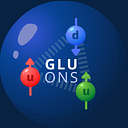Building a Job Recommendation System Using NLP Techniques (BART and NER Models)
Leveraging AI to enhance job matching for employers and job seekers
Issues in job matching via ATS
In today’s competitive job market, finding the perfect match between job seekers and employers can be incredibly challenging. Traditional methods, such as Applicant Tracking Systems (ATS), often rely heavily on keyword matching to filter resumes and job descriptions. This approach can be frustrating for both job seekers and employers, as it often overlooks qualified candidates who use different terminology or synonyms. For example, a candidate may have expertise in “data analysis” but be overlooked by an ATS looking for “data analytics.” Similarly, a job description requiring “project management” skills might miss out on candidates who describe their experience as “program management.”
These mismatches can lead to missed opportunities, where job seekers fail to get noticed by potential employers, and employers miss out on qualified candidates. The rigidity of keyword-based filtering can also result in a less diverse pool of candidates, further limiting the potential for finding the best fit for a job. Moreover, job seekers often struggle to tailor their resumes to match the exact wording of job descriptions, leading to frustration and inefficiency in the hiring process.
A feasible solution?
To address these issues, we can leverage advanced Natural Language Processing (NLP) techniques to create a smarter and more effective job recommendation system. By using NLP, we can understand the context and semantics behind job descriptions and candidate profiles, allowing for more accurate and personalized job matching. This system can recognize synonyms, related terms, and even the sentiment behind job descriptions and candidate profiles, ensuring a more comprehensive and inclusive matching process. For instance, it can connect a job requiring “software development” expertise with a candidate who has a background in “coding” and “programming.”
Here is my proposed solution: I developed a Flask-based job recommendation system using Hugging Face transformers for NLP and deploy it through Kubernetes. Here’s the step-by-step guide:
Setting Up Your Environment
First, let’s set up our environment by installing the necessary libraries and creating a directory for our project.
mkdir job_recommendation_api
cd job_recommendation_api
pip install transformers FlaskDeveloping the NLP Model Using Hugging Face
We start by creating a Python script (nlp_model.py) to load pre-trained NLP models for topic modeling, named entity recognition, and sentiment analysis.
# nlp_model.py
from transformers import pipeline
# Load pre-trained NLP models
topic_model = pipeline('zero-shot-classification', model='facebook/bart-large-mnli')
ner_model = pipeline('ner', model='dbmdz/bert-large-cased-finetuned-conll03-english')
sentiment_model = pipeline('sentiment-analysis')
def analyze_text(job_description, candidate_profile):
topics = topic_model(job_description, candidate_profile)
entities = ner_model(candidate_profile)
sentiment = sentiment_model(job_description)
return topics, entities, sentimentThis script loads the models and defines a function to analyze job descriptions and candidate profiles, returning the results for further processing.
Creating the Flask Application
Next, we create the Flask application (app.py) to expose our recommendation logic via an API.
# app.py
from flask import Flask, request, jsonify
from nlp_model import analyze_text
app = Flask(__name__)
@app.route('/recommend', methods=['POST'])
def recommend():
data = request.json
job_descriptions = data['job_descriptions']
candidate_profiles = data['candidate_profiles']
recommendations = []
for candidate in candidate_profiles:
candidate_recommendations = []
candidate_profile = candidate['profile']
for job in job_descriptions:
job_description = job['description']
topics, entities, sentiment = analyze_text(job_description, candidate_profile)
score = sum([item['score'] for item in topics['scores']]) + len(entities) + sentiment[0]['score']
candidate_recommendations.append({
'job_id': job['id'],
'score': score,
'topics': topics,
'entities': entities,
'sentiment': sentiment
})
best_job = max(candidate_recommendations, key=lambda x: x['score'])
recommendations.append({
'candidate_id': candidate['id'],
'best_job': best_job
})
return jsonify(recommendations)
if __name__ == '__main__':
app.run(host='0.0.0.0', port=5000)In this script, we define an endpoint (/recommend) that accepts job descriptions and candidate profiles, performs NLP analysis, and returns the best job match for each candidate.
Containerizing the Application with Docker
To ensure our application runs consistently across different environments, we containerize it using Docker.
- Create a Dockerfile:
# Dockerfile
FROM python:3.9-slim
WORKDIR /app
COPY requirements.txt requirements.txt
RUN pip install -r requirements.txt
COPY . .
CMD ["python", "app.py"]2. Create a requirements.txt file:
Flask
transformers
torch3. Build and run the Docker container:
docker build -t job_recommendation_api .
docker run -p 5000:5000 job_recommendation_apiThese steps create a Docker image of our application and run it in a container, exposing it on port 5000.
Deploying Using Kubernetes
Finally, we deploy our containerized application using Kubernetes for scalability and reliability.
- Create a Kubernetes deployment file (
deployment.yaml):
# deployment.yaml
apiVersion: apps/v1
kind: Deployment
metadata:
name: job-recommendation-api
spec:
replicas: 3
selector:
matchLabels:
app: job-recommendation-api
template:
metadata:
labels:
app: job-recommendation-api
spec:
containers:
- name: job-recommendation-api
image: job_recommendation_api
ports:
- containerPort: 5000
---
apiVersion: v1
kind: Service
metadata:
name: job-recommendation-api-service
spec:
selector:
app: job-recommendation-api
ports:
- protocol: TCP
port: 80
targetPort: 5000
type: LoadBalancer2. Apply the Kubernetes deployment:
kubectl apply -f deployment.yamlThis YAML file defines a Kubernetes deployment and a service to manage and expose our application. By applying this configuration, our application is deployed and scaled automatically.
By following these steps, you’ll create a powerful job recommendation system that uses cutting-edge NLP techniques. With Flask for building the API, Docker to package everything neatly, and Kubernetes for smooth deployment, you’ll ensure the system can grow with your needs. This setup makes it easier to connect job seekers with jobs that truly match their skills and aspirations, streamlining the hiring process for everyone involved.
If you’re interested, you can read more about it on my GitHub or feel free to contact me via email or instagram (@natgluons). Have a good day!
